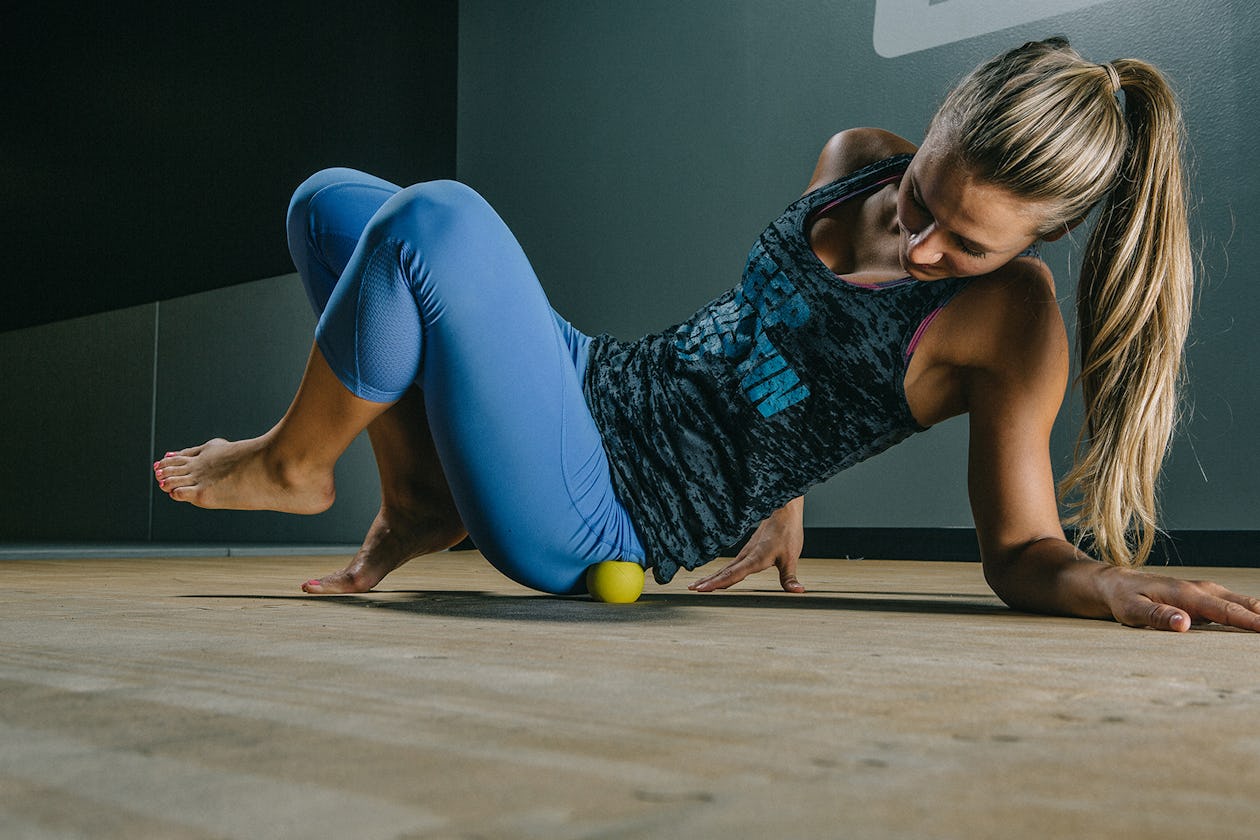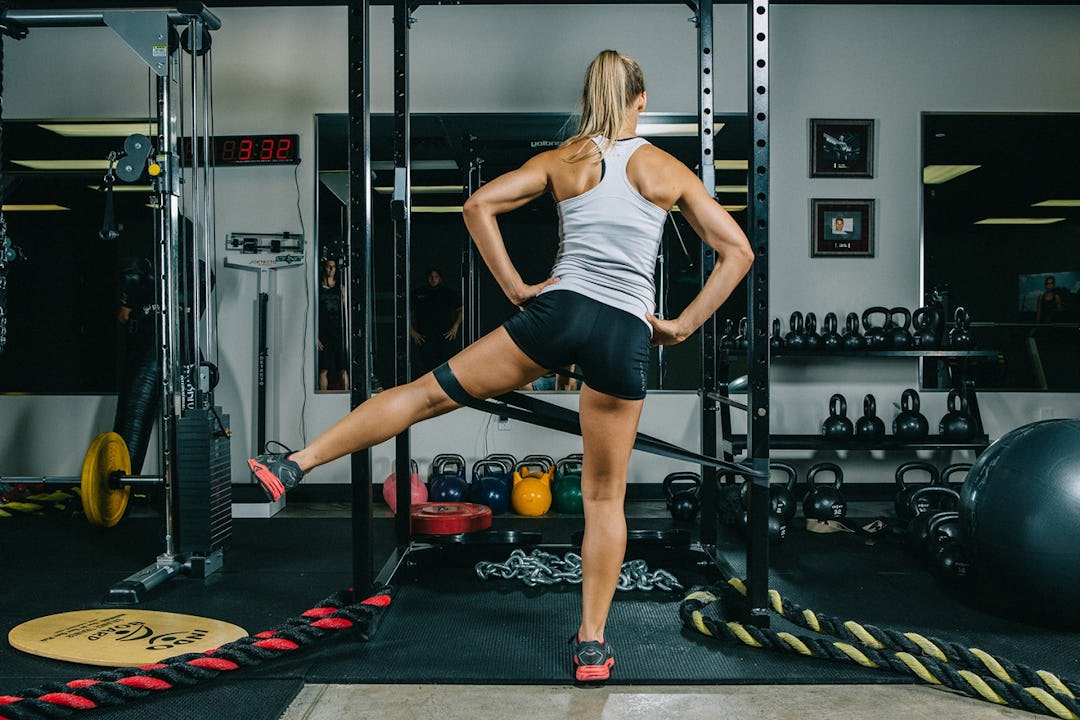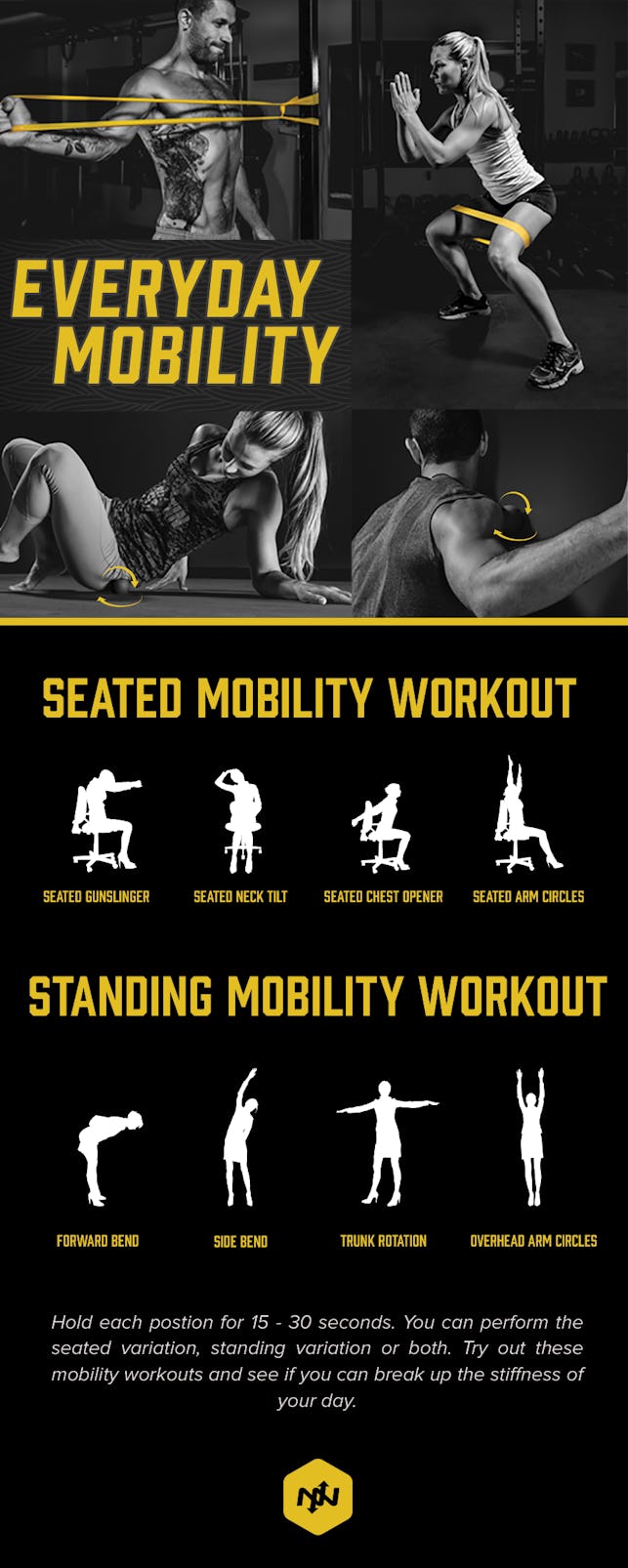Mobility training is quite the rage in the fitness world right now and for good reason; when performed optimally, it works. I can remember doing a type of mobility training beginning with my early youth playing soccer. At the time mobility training meant simply going through the big motions during warm up.
Arm circles, hip rotations, maybe some leg swings were all ways we got ready for the big game, but that was merely all they were, movements to prepare us for our current best level of ability. The mobility training I know today involves so much more. It makes us better at movement, improves our skills and even bring us out of pain or prevents pain all together.
As I recently dove deeper into the study of mobility training I realized movement can be both great and detrimental to one’s quality of movement. Years of sports, running, lifting and knee injuries made my hips tight by locking my adductors which was functional for the sports I was playing but also caused dull back pain and a poor squat pattern especially in ranges of motion where my body was not accustomed too. I realized I had to make some changes or I was on a slippery slope to more pain.
Over the last two years I am finally starting to feel better and I realize that the key to freeing up my aliments and bad movement patterns comes from more focused and proper movement of my joints and activation of my muscles.
Through the help of people like Ann and Chris Frederick of Stretch to Win and Dr. Andreo Spina I started to take a more serious look into ways to make mobility training both efficient and highly effective for my athletes and myself. In this article I am going explain three concepts that will take your mobility training to the next level and get the results you are looking for in a shorter amount of time.
Mobility Training Tip #1. Go Slow

Human nature dictates that we tend to want to finish something up quickly and move on to more pleasurable or rewarding things; with mobility training this can be the same as well.
Whether you go quickly through the motion to get to your lifting or whether you get to an area of the body that is restricted so you quickly bypass it and move on to a more favorable movement; you are not going make any mobile ground that way.
The true goal for mobility training goes way beyond a simple warm up; you gain access to more range of motion which makes the joint healthier and less prone to injury.
Truth is the slower you go the more you will get out of your mobility training for two reasons. First, by moving fast through uncharted areas of articulation you gain less feedback about how the joints are moving because your brain cannot process the information fast enough.
Simply swinging your arm in a circle like a helicopter propeller provides little to no feedback as to how well you are doing the movement; by going fast you may not be aware that your arm abducts at the top of the movement because the joint is tight. Only by going slow is where you find the area of limitation in the movement which then becomes the areas to work on.
Secondly, by going slow is where you can find ways to gain mobility. Going back to our shoulder example, at the top of the motion is where we find restriction; instead of letting the arm abduct to complete the rotation, we want to slowly find positions where the shoulder is allowed to move without compensation.
Things like traction of the joint or scapular depression can be utilized to gain more mobility along the previous path you were moving with your arm. Finding those slight movement adjustments you need to create a new mobile path lead to greater joint health and more mobility in that joint. The best way to achieve new paths towards enhanced motion is by going slow.
Shoulder Pain Mobility Workout
Experiencing Shoulder Pain? Try this workout video consisting of a 5 resistance band exercises that will help alleviate shoulder pain.
Mobility Training Tip #2. Find More Movement Out of the End Ranges

Similarly to what was stated above about moving around mobility blocks; people have a tendency to hit their end range of motion, immediately hit the brakes and reverse towards a more comfortable position. The main reason for this is that the end ranges are called that for a reason, that is the end of your mobility for a particular joint at a particular position and you won’t be able to go any further, however by not embracing the pain at these end ranges you are cutting your mobility growth short.
I have found one of the quickest ways to gain more permanent mobility is to get into end ranges and find ways to move those end ranges out. For example, un-weighted, find your lowest squat position and get to a point where you are into an end range with minimal discomfort without straining. I like to start with trying to get more comfortable by taking a few deep breaths and sinking into a lower position which will relax the surrounding muscles and therefore make it less strenuous.
After you get to a new end point you can then start to make small movements in different directions to gain more mobility. I like to first shift side to side, then make small circular movements while my feet stay on the ground all the while keeping my hips down at the end range by not raising them as I am moving. As I gain more range I can make the circles larger and even move the feet in or out more depending where I need more mobility. Use these subtle movements at end ranges on your most stubborn joints and you will see your mobility increase dramatically.
Knee Pain Mobility Workout
Experiencing Knee Pain? Try this workout video consisting of a 5 resistance band exercises that will help alleviate knee pain.
Mobility Training Tip #3. Work on Frequency

Making time for anything, let alone mobility, and adding it to a busy training and practice schedule might seem like a daunting task however mobility training might be easier than you think. The best part of mobility training is that it can be done anywhere or at anytime with no equipment. The best way to gain more mobility is to make your sessions short and frequent.
A few ways I like to insert mobility training into daily practice is to make it a part of a warm up. Five minutes of slow and focused mobility work before a training session is enough to get your body primed and ready for your session.
Other ways to add mobility in is to do it throughout the day for a few minutes. As I sit here writing this article if I get a notion that my hips and shoulders are starting to lock up I will get up and move my hips and shoulders around a bit and try not to become too static.
Performing a mobility flow routine is also a way to not only find enjoyment out of the movement but you can also make mobility work more dynamic and see how your body responds to transitions from one position to the next. 3-5 minutes of mobility flow is a great way to gain more mobility especially when keeping the principles stated above in mind.
Adding a mobility routine in the morning can wake you up and get the stiffness out of your body from the day before just like a quick nighttime session before you sleep can enhance your recovery from the day and set you off on the right foot for the next. The most important thing to do is to just do it when you can and when your body tells you it needs it and you pretty much can’t go wrong.
Mobility Workout
Adding these mobility tactics into your structured strength and conditioning program will enhance your ability to move better and perform at your best. Now go out and make it happen. Above is full body mobility warmup video using light resistance bands and below is a simple bodyweight only mobility routine you can do before your workout or every few hours throughout the day. You can even do it sitting down.


)





